Lab-Grown Rubies, Sapphires, and Emeralds
Lab-Grown Rubies, Sapphires, and Emeralds are synthetic versions of some of the world’s most beloved and valuable gemstones. These lab-grown gems are created using advanced technologies that replicate the natural conditions under which these stones form, resulting in stones that have identical chemical, physical, and optical properties to their natural counterparts. They are an ethical, sustainable, and affordable alternative to mined gemstones, with increasing popularity in the jewelry market.
Lab-Grown Rubies
Rubies are a variety of corundum (the same mineral family as sapphires) and are prized for their rich, vibrant red color, which comes from the presence of chromium. Natural rubies can be very expensive, especially for high-quality stones with intense color and few inclusions. Lab-grown rubies offer an affordable, ethical alternative while maintaining the same allure.
How Lab-Grown Rubies are Made
- Flux Growth Method:
- In this method, raw materials are dissolved in a flux (a substance that helps the materials melt at a lower temperature), and rubies are grown slowly over time. This method can be used to create high-quality rubies with fewer inclusions.
- Verneuil (Flame Fusion) Process:
- This is the most common method for creating synthetic rubies. In the Verneuil process, aluminum oxide is melted in a flame, and a small quantity of chromium is added. The molten material crystallizes as it cools, forming ruby crystals. This process produces rubies with great color but sometimes with more inclusions compared to other methods.
- Czochralski Method:
- The Czochralski method involves melting the raw materials in a crucible and using a seed crystal to slowly pull out the ruby crystal as the material cools. This method can produce larger rubies with fewer inclusions.
Properties of Lab-Grown Rubies
- Chemical Composition: Identical to natural rubies, lab-grown rubies are made from aluminum oxide (Al₂O₃) with chromium as the coloring agent.
- Hardness: 9 on the Mohs scale, making them very durable and suitable for daily wear.
- Appearance: They exhibit the same vibrant red color as natural rubies and can have fewer inclusions (flaws) due to the controlled manufacturing process.
- Cost: Lab-grown rubies are significantly more affordable than their natural counterparts due to the less expensive manufacturing process.
Lab-Grown Sapphires
Sapphires are another variety of corundum, typically blue, though they come in a range of colors (pink, yellow, green, and more). Sapphires have been used in jewelry for centuries and are highly valued for their brilliant color, durability, and rarity. Lab-grown sapphires are becoming increasingly popular for those seeking a more sustainable and cost-effective option.
How Lab-Grown Sapphires are Made
- Flux Growth Method:
- Similar to rubies, the flux growth method can be used to create lab-grown sapphires. The process involves dissolving raw materials in a flux and allowing the sapphire crystals to grow slowly.
- Czochralski Method:
- The Czochralski method is also used to grow high-quality lab-grown sapphires. A seed crystal is used to slowly pull the sapphire crystal from the molten material as it cools.
- Hydrothermal Method:
- The hydrothermal method mimics the natural conditions under which sapphires form in the Earth’s crust. A mixture of raw materials is placed under high temperature and pressure, creating conditions that allow the sapphire crystals to grow.
- Verneuil Process:
- The Verneuil process is also used to create synthetic sapphires, though it is more commonly applied to rubies. This process uses a high-temperature flame to melt aluminum oxide and create sapphire crystals.
Properties of Lab-Grown Sapphires
- Chemical Composition: Lab-grown sapphires are made of aluminum oxide (Al₂O₃), with trace elements like iron and titanium responsible for their color.
- Hardness: 9 on the Mohs scale, making them extremely durable and suitable for everyday wear.
- Appearance: Lab-grown sapphires have the same appearance as natural sapphires, often with fewer inclusions due to the controlled growth process.
- Cost: Lab-grown sapphires are far less expensive than natural sapphires, as they are produced using a faster, more cost-effective process.
Lab-Grown Emeralds
Emeralds are a variety of beryl and are famous for their stunning green color, which is caused by the presence of chromium and vanadium. Natural emeralds are highly sought after but can be expensive due to their rarity, inclusions (known as “jardin”), and the complexities of the mining process. Lab-grown emeralds offer a way to enjoy the same beautiful green hue at a more accessible price.
How Lab-Grown Emeralds are Made
- Hydrothermal Method:
- The most common method for growing synthetic emeralds is the hydrothermal method. This process mimics the natural conditions under which emeralds form deep within the Earth’s crust. Raw materials are dissolved in a high-temperature, high-pressure solution, and the crystals slowly grow on a seed crystal.
- The result is a gemstone with the same chemical composition and optical properties as natural emeralds, including their rich green color.
- Flux Growth Method:
- The flux growth method can also be used to create synthetic emeralds. In this method, raw materials are dissolved in a flux, and emerald crystals are formed as the mixture cools.
- Czochralski Method:
- The Czochralski method can also be used to grow lab-grown emeralds, but it is less commonly used compared to the hydrothermal method.
Properties of Lab-Grown Emeralds
- Chemical Composition: Lab-grown emeralds are made of beryl (Be₃Al₂(SiO₃)₆) with trace amounts of chromium or vanadium, which give them their green color.
- Hardness: 7.5 to 8 on the Mohs scale, making them durable but slightly more prone to scratching than rubies or sapphires.
- Appearance: Lab-grown emeralds can have fewer inclusions than natural emeralds, although they may still contain some to replicate the “jardin” (garden) effect that natural emeralds often have.
- Cost: Lab-grown emeralds are generally much more affordable than natural emeralds, which are rare and often come with significant price tags.
Benefits of Lab-Grown Rubies, Sapphires, and Emeralds
- Affordability:
- Lab-grown gemstones are typically 20-40% less expensive than their natural counterparts, making them a more budget-friendly option without sacrificing quality, color, or appearance.
- Ethical and Sustainable:
- Lab-grown stones do not come from mines, so they avoid the environmental impact and ethical concerns associated with mining. This makes them a more eco-friendly and sustainable choice, particularly for consumers who are concerned about the impact of gemstone extraction.
- Identical in Appearance:
- Lab-grown rubies, sapphires, and emeralds are chemically and physically identical to natural stones, meaning they offer the same beauty, color, brilliance, and durability. Often, they even have fewer inclusions or imperfections due to the controlled growing process.
- No Conflict or Exploitation:
- As lab-grown stones are produced in controlled environments, they do not contribute to the social and political issues surrounding the mining industry, such as labor exploitation, conflict diamonds, and unsafe working conditions.
- Availability:
- Lab-grown gemstones are readily available and can be created in a variety of sizes, shapes, and colors, allowing consumers more options than they would typically have with natural stones, which can be rare or difficult to source.
Drawbacks of Lab-Grown Rubies, Sapphires, and Emeralds
- Perceived Value:
- While lab-grown gemstones are chemically identical to natural gemstones, some consumers may still value the rarity and natural origins of mined gemstones. Lab-grown stones typically do not hold the same perceived prestige as natural stones.
- Resale Value:
- Lab-grown gemstones generally do not hold the same resale value as natural gemstones. Their value is primarily based on the cost of production, rather than rarity or historical significance.
- Lack of Rarity:
- Because they are produced in laboratories, lab-grown gemstones are not rare, which may diminish their appeal to collectors or investors looking for a gemstone that appreciates in value over time.
Conclusion
Lab-grown rubies, sapphires, and emeralds offer a sustainable, ethical, and cost-effective alternative to their natural counterparts. They are identical to natural gemstones in terms of their chemical composition, physical properties, and appearance, making them an excellent choice for those who want the beauty of these gemstones without the high cost or ethical concerns associated with mining.
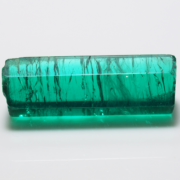
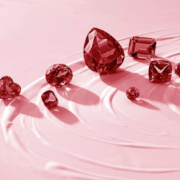
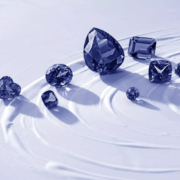
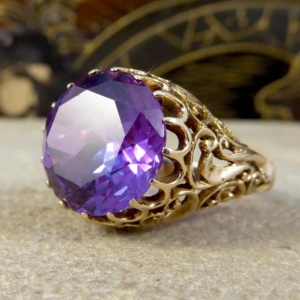
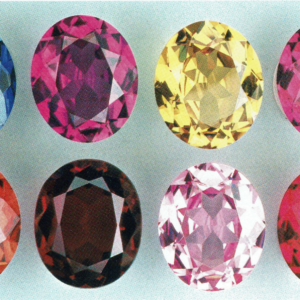
Leave a Reply
Want to join the discussion?Feel free to contribute!